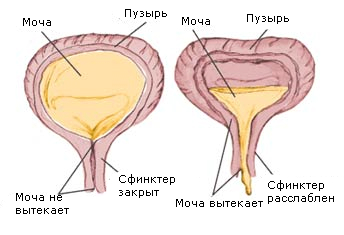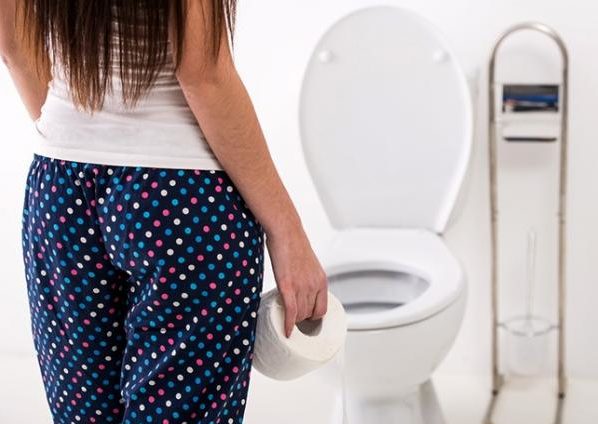Weak bladder in women: effective treatments
A weak bladder is a delicate problem for a woman, because it is nothing more than urinary incontinence. Many prefer to remain silent and not even complain to their loved ones. This is the wrong tactic, because when the disease becomes chronic, it is much more difficult to cure it.
An experienced urologist can help get rid of this disease once and for all. A weak bladder can be the result of injury or sclerosis of the external sphincter of the bladder, as well as tumors of benign or malignant etiology.
Both men and women suffer from this disease, but according to statistics, 70% of all cases of the disease are related to the female half of humanity.
With a normal physiological rhythm and an absolutely healthy bladder, urine accumulates in a certain volume. Sensitive endings of the receptor system of the muscle layer, bladder mucosa and sphincter transmit signals towards the central nervous system (CNS). The reverse reaction of the central nervous system is heaviness in the projection zone of the bladder, that is, pressure appears in the small pelvis. Emptying of the fluid occurs through contraction of the muscular layer of the bladder and relaxation of the sphincter muscles. After urination, the contractions stop, and the sphincter takes its initial position, tightly closing the lumen of the urethra.
A weak bladder in women is characterized by a damaged sphincter closure function, therefore, with the slightest filling of the bladder and little physical activity, “urination” occurs.
 Causes of weakness:
Causes of weakness:
- hereditary factors;
- age-related changes in the structure of the bladder;
- anomalies in the development of the genitourinary system;
- inflammatory and infectious diseases;
- poisoning with pesticides;
- pregnancy;
- childbirth;
- operations on the genitourinary system;
- chronic cystitis;
- oncological diseases;
- bladder polyposis;
- violation of the innervation of the pelvic organs;
- tuberculosis;
- injuries in the pelvic area with the involvement of the genitourinary organs.
Difficult delivery of a large fetus or its incorrect presentation leads to injury to the bladder, urinary canal and external sphincter. This happens due to strong and prolonged pressure on these organs. Muscle tone weakens, becomes inflamed and does not recover if appropriate measures are not taken.
As for climacteric changes, in this case, hypertrophy of the genitourinary organs occurs, the detrusor remains half-open and urine flows outward under low tension or freely exits the bladder that is not completely closed.
Symptoms of bladder weakness
The first most important symptom is frequent, scanty and painless emptying of the bladder. The second symptom of weakness is the feeling of a constantly full bladder.

Chronic weakness is characterized by involuntary urination during coughing, sneezing, jumping, running, fear or laughter. As a rule, it temporarily passes, and in infectious diseases, sphincter weakness returns in the acute phase.
Cystitis and a sharp hypothermia of the body are accompanied by weakness, which disappears after treatment with antibiotics and nonsteroidal drugs.
Important! After suffering an inflammatory and infectious disease of the bladder, as well as with frequent acute respiratory viral infections, the weakness of the urinary canal sphincter can persist until the end of life, so it is necessary to conduct a full course of treatment in the urology department under medical supervision.
Treating a Weak Bladder in Women
The disease brings a lot of trouble, especially for a working woman who is constantly in the public eye. Frequent weaning to the toilet can threaten with dismissal. Plus, thoughts will be constantly directed towards the urinary system.
At the same time, sexual life suffers doubly, that is, women refuse sexual intercourse because of free urination and fear of embarrassing themselves in front of their partner, even if a couple of drops of urine dripped during sex. Therefore, you should not hesitate to contact a doctor, because only after a complete examination, he will be able to suggest how to strengthen the bladder.
Treatment is carried out exclusively with an individual approach. The course of treatment includes antibiotic therapy, physiotherapy exercises, and bladder massage is often prescribed in inpatient treatment.
Are there ways to help yourself?
A strengthening approach is possible in support of therapy prescribed by a urologist. It mainly consists of the following recommendations:

revise diet
It is necessary to use less meat products, do not abuse fried, fatty and spicy. From drinks, non-carbonated natural drinks are recommended, it is important to give up strong tea and coffee. Up to 5 g of table salt can be consumed per day.
Include seafood, fish and nuts (walnuts, forest and pine nuts), as well as pumpkin and sunflower seeds in the menu. Every day, eat 100 g of undercooked rice and sprouted wheat. Decoctions and fresh teas from lemon balm, St. John's wort and mint will help improve the functioning of the genitourinary system. Decoctions are a persistent strengthening of the muscles of the bladder and sphincter.
Regulate fluid intake to 1.5 liters per day. Try not to drink a lot of tea or juice at work.
Do exercises to strengthen your pelvic muscles
Constant strengthening exercises for the musculature of the small pelvis and bladder will improve the physiological functioning of the sphincter.

- Synchronous tension of the muscles of the genitourinary system: tighten the muscles and hold it for about 5 seconds, then relax and repeat up to 40 times. Repeat this exercise 20 times a day.
- Strengthening bladder muscles under load: lying in a horizontal position, raise both legs up and down 40-50 times. Repeat this exercise 5 times a day.
- Comprehensive strengthening of the abdominal and pelvic muscles: synchronous contraction of the rectus abdominis and pelvic muscles. 50-100 contractions are performed in any position of the body (lying, sitting or standing).
- Training the contractile function of the sphincter: we contract only the external sphincter of the bladder. Exercises are repeated up to 50 times 10-20 times a day.
If you are busy at work, then these exercises can be performed fractionally, that is, divided into two parts, performed in the morning and evening.
Important! If you have had bladder surgery, you should definitely consult with your doctor before doing strengthening exercises.
If the bladder is weak, it is recommended to use urological pads. It is important to change them often in order to exclude inflammatory processes. For a favorable outcome of the disease, it is recommended to undergo laboratory and instrumental studies in a timely manner, as well as a full course of drug therapy.




